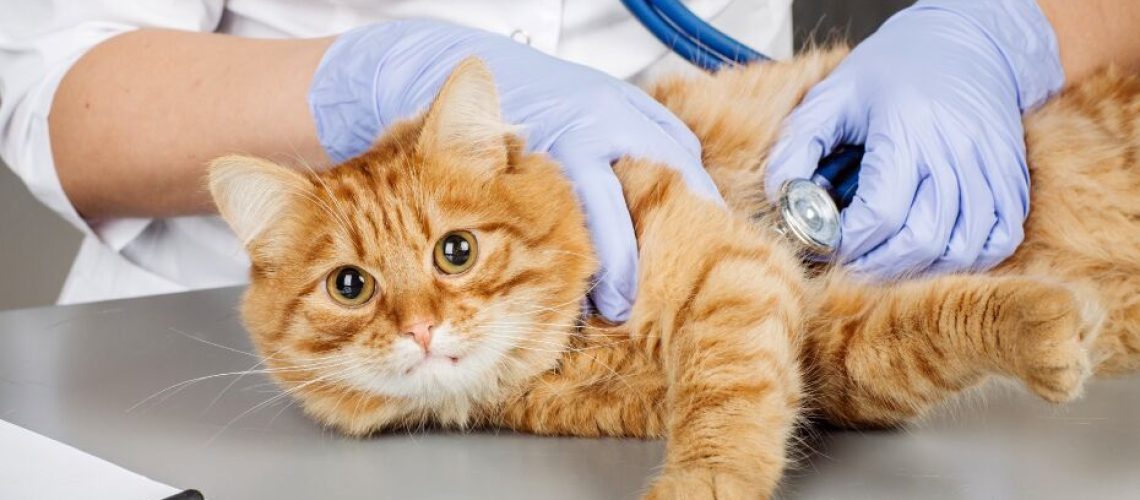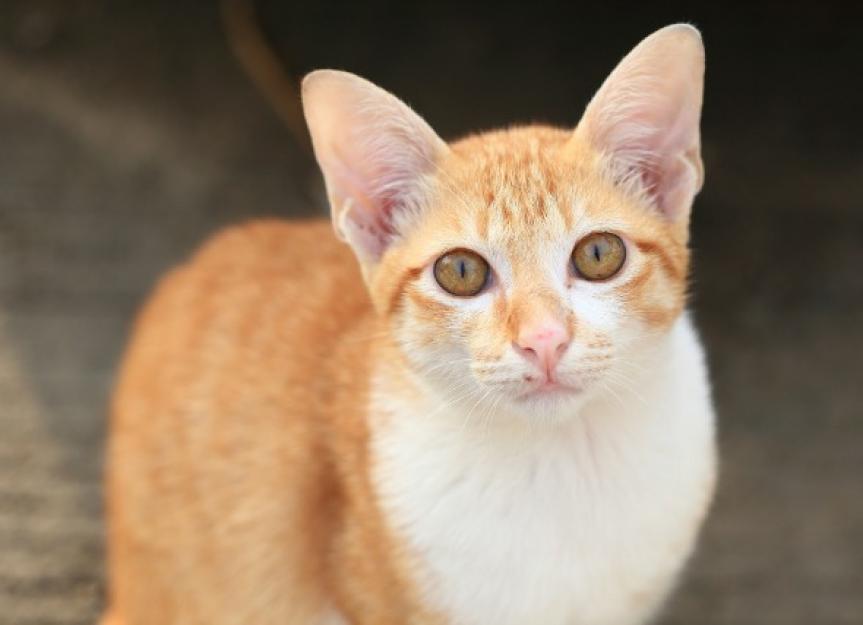Are you a cat lover? Do you ever wonder why your furry friend sometimes acts a little strange or seems off balance? Well, get ready to unlock the secrets of your feline companion's brain as we dive into the fascinating world of neurological disorders in cats. Understanding these conditions not only allows us to provide the best care for our beloved pets but also gives us a deeper appreciation for their resilience and strength. Did you know that up to 5% of cats worldwide are affected by some form of neurological disorder? That means millions of cats are navigating through life with unique challenges. So, whether you're a curious cat parent or simply intrigued by the wonders of the animal kingdom, join us on this journey as we unravel the mysteries behind neurological disorders in cats. Get ready to be amazed!
Key Takeaways:
- Neurological disorders in cats can present with a variety of symptoms, including seizures, balance issues, and changes in behavior.
- It is important to consult a veterinarian if you suspect your cat may have a neurological disorder, as early diagnosis and treatment can improve outcomes.
- Diagnostic tests such as blood work, MRI scans, and spinal taps may be necessary to determine the underlying cause of the neurological disorder.
- Treatment options for neurological disorders in cats may include medication, physical therapy, and dietary changes.
- Cats with neurological disorders may require ongoing monitoring and management to ensure their quality of life is maintained.
Understanding Neurological Disorders in Cats
What are Neurological Disorders?
Neurological disorders are conditions that affect the nervous system of cats. The nervous system is responsible for coordinating the body's movements, sensations, and functions. When a cat has a neurological disorder, it means there is a problem with the way their brain, spinal cord, or nerves function. These disorders can be caused by various factors such as genetic abnormalities, infections, trauma, or even aging. Some common neurological disorders in cats include epilepsy, vestibular disease, and spinal cord injuries.
How Do Neurological Disorders Affect Cats?
Neurological disorders can have a significant impact on a cat's daily life. Depending on the specific disorder and its severity, cats may experience a range of symptoms such as seizures, difficulty walking or balancing, changes in behavior or personality, loss of coordination, weakness in limbs, or even paralysis. These symptoms can vary from mild to severe and may come and go or worsen over time. It's important to recognize these signs early on so that proper diagnosis and treatment can be provided.
Signs and Symptoms of Neurological Disorders in Cats
Recognizing Common Signs of Neurological Disorders
It is essential for cat owners to be aware of the signs that may indicate a neurological disorder in their furry friends. Some common signs include:
1. Seizures: Cats experiencing seizures may exhibit convulsions or lose consciousness temporarily.
2. Abnormal Gait: Difficulty walking or balancing properly can indicate an issue with the nervous system.
3. Changes in Behavior: Unusual aggression, confusion, disorientation, or sudden changes in personality could be signs of a neurological disorder.
4. Loss of Coordination: Cats may stumble while walking or have trouble jumping onto surfaces they used to easily reach.
5. Weakness or Paralysis: Limbs may become weak, and in severe cases, cats may lose the ability to move certain parts of their body.
When to Seek Veterinary Care
If you notice any of these signs or suspect that your cat may have a neurological disorder, it is crucial to seek veterinary care promptly. A veterinarian will be able to perform a thorough examination and recommend appropriate diagnostic tests to determine the cause of the symptoms. Early detection and intervention can greatly improve the prognosis for cats with neurological disorders.
Tips for Preventing Neurological Disorders in Cats
Promoting a Healthy Lifestyle
While some neurological disorders cannot be prevented, there are steps cat owners can take to promote overall health and reduce the risk of certain conditions:
1. Vaccinations: Keeping your cat up-to-date on vaccinations can help prevent infections that could potentially lead to neurological problems.
2. Parasite Control: Regularly administering flea, tick, and worm prevention treatments can protect your cat from parasites that may cause neurological issues.
3. Safety Measures: Creating a safe environment for your cat by removing potential hazards such as toxic plants or chemicals can reduce the risk of accidents and injuries.
4. Balanced Diet: Providing a balanced diet with essential nutrients can support your cat's overall health and strengthen their immune system.
5. Regular Veterinary Check-ups: Routine check-ups allow veterinarians to monitor your cat's health and detect any potential issues early on.
By following these preventive measures, you can help ensure that your furry friend stays healthy and reduces the likelihood of developing neurological disorders.
Which Cat Breeds are Prone to Neurological Disorders?
Cat Breeds Prone to Neurological Disorders
While neurological disorders can affect cats of any breed, certain breeds are more prone to specific conditions due to genetic factors. Some examples include:
1. Siamese Cats: Siamese cats have a higher risk of developing a condition called congenital vestibular disease, which affects their balance and coordination.
2. Burmese Cats: Burmese cats are more susceptible to a genetic disorder called hypokalemia, which can lead to muscle weakness and paralysis.
3. Persian Cats: Persian cats are prone to polycystic kidney disease, which can also affect the neurological system due to cysts in the brain.
It's important to note that not all cats of these breeds will develop neurological disorders, but being aware of potential risks can help owners monitor their cats' health more closely and seek veterinary care if needed.
Treatment Options for Cats with Neurological Disorders
Seeking Veterinary Care
When it comes to treating neurological disorders in cats, it is crucial to consult with a veterinarian who specializes in neurology. The specific treatment options will depend on the underlying cause and severity of the disorder. Some common treatment approaches include:
1. Medication: Veterinarians may prescribe medications such as anticonvulsants or anti-inflammatory drugs to manage symptoms and reduce inflammation in the nervous system.
2. Physical Therapy: In some cases, physical therapy exercises or rehabilitation programs may be recommended to improve mobility and strengthen muscles.
3. Surgery: If there is an identifiable structural issue causing the neurological disorder, surgical intervention may be necessary to correct or alleviate the problem.
4. Supportive Care: Providing a comfortable environment, proper nutrition, and regular veterinary check-ups can help support your cat's overall well-being while managing their neurological condition.
It's important to work closely with your veterinarian throughout the treatment process and follow their recommendations for your cat's specific needs.
Diagnosing a Neurological Disorder in Your Cat
Diagnostic Process
Diagnosing a neurological disorder in cats can be challenging as symptoms may overlap with other conditions. The diagnostic process typically involves:
1. Physical Examination: A veterinarian will perform a thorough physical examination to assess your cat's overall health and look for any visible signs of neurological issues.
2. Medical History: Providing your cat's medical history, including any recent changes in behavior or symptoms, can help the veterinarian narrow down potential causes.
3. Diagnostic Tests: Additional tests such as blood work, X-rays, MRI scans, or cerebrospinal fluid analysis may be necessary to identify the specific cause of the neurological disorder.
Based on the findings from these examinations and tests, your veterinarian will be able to make an accurate diagnosis and develop an appropriate treatment plan for your cat.
Lifestyle Changes to Improve a Cat's Quality of Life with a Neurological Disorder
Creating a Comfortable Environment
Making certain adjustments to your cat's environment can significantly improve their quality of life when living with a neurological disorder:
1. Safety Measures: Ensuring that your home is free from hazards such as sharp objects or slippery surfaces can prevent accidents and further injuries.
2. Easy Access: Providing ramps or steps to help your cat access elevated areas like beds or sofas can assist them if they have difficulty jumping due to their condition.
3. Soft Bedding: Offering comfortable bedding options that provide support for their body can alleviate discomfort and pressure points.
4. Regular Exercise: Engaging in gentle exercise activities tailored to your cat's abilities can help maintain muscle tone and prevent stiffness.
Additionally, providing mental stimulation through interactive toys or puzzle feeders can keep your cat engaged and mentally stimulated despite any physical limitations they may have.
By making these lifestyle changes, you can ensure that your furry friend enjoys a comfortable and fulfilling life while coping with their neurological disorder.
In conclusion, neurological disorders in cats can be challenging to navigate, but with proper care and support from veterinarians and pet owners, affected cats can still lead happy and fulfilling lives. It is important to stay informed, seek professional help when needed, and provide a loving environment for our furry friends.
Can a cat survive neurological issues?
The outlook for different neurological disorders in cats can vary. For instance, cats with brain tumors can often have a good prognosis and live long and healthy lives after surgery to remove the tumor. However, cases of FIP (feline infectious peritonitis) are usually fatal. Detecting signs of neurological problems in cats early on is crucial for a better prognosis.
How do you test for neurological disorders in cats?
Typical laboratory examinations consist of blood tests, urine analysis, examination of cerebrospinal fluid, x-rays, CT scans, MRI scans, and assessment of brain, peripheral nerve, and muscle electrical activity.
What causes sudden neurological issues in a cat?
There are various factors that can cause a brain disorder in your cat, including inflammation in the brain from infectious diseases like meningitis or encephalitis. Other potential causes include viral infections like rabies, birth defects, and the presence of tumors or abnormal growths in the brain.
What are the symptoms of neurological FIP in cats?
The FIP virus can spread to various locations in the body through infected macrophages that enter the bloodstream. The primary symptoms of neurological FIP include fever, loss of appetite, weight loss, and difficulty with coordination, particularly in the back end of the body.
What are the symptoms of neurotoxicity in cats?
Common signs of neurological issues include behavior changes such as hiding or excitability, difficulty coordinating movements, trembling, seizures, extreme tiredness, or loss of consciousness.
Can nerve damage be reversed in cats?
Nursing care is the only treatment available for this condition. The majority of affected animals show improvement within 3 weeks and fully recover within 2 to 6 months. However, animals with severe symptoms may not fully recover and can die from respiratory paralysis.

















